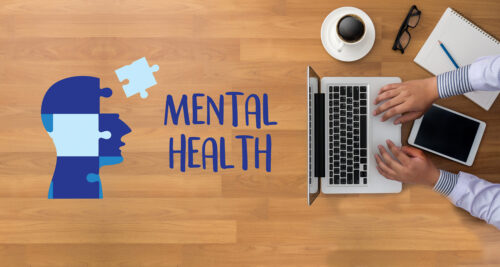
Pretending that in class high school, circa 2019 was a panacea that we must return to if we are to restore “the perfect” mental health of students, is simply not true for millions of students globally. The “one size fits all” model benefits some students, but has historically been detrimental to others. Today we have an opportunity to create a number of model options that are more inclusive, offer a wider range of student success and provide alternatives that can positively impact mental well-being and cognitive fitness. As we reflect on the impact of Omicron and school re-openings, we are once again faced with the necessity of “ Synchronous Emergency Online Learning”. It is time however, that we revisit the false binary conversation between in person vs synchronous emergency online school. The most impactful conversation is not a binary conversation about which “one size fits all” model works. Instead, we would be better served if the conversation evolved to one about desired outcomes for students, as articulated by them and their guardians, and the tools that we will need to help them achieve those outcomes. It is worth mentioning that online learning should not always be a “synchronous teacher staring live action” TV show. Live TV shows are exceptionally difficult to do, and even more difficult to do well for 192 days, 6 hours a day. One can argue that it is unreasonable for anyone to watch a synchronous live feed for 6 hours a day, 192 days a year. It follows that asking students to do this is also unreasonable. At OVS we have over 10 000 current students and a 98% post secondary acceptance rate. The success rate, plus the amount of students make us one of the most successful high schools anywhere on the planet. This success is a result of benefits derived from The OVS Asynchronous Student Success model that allows us to maintain ministry inspected standards, while personalizing aspects of the learning at scale. The benefits range from increased mental wellness for many students, cognitive optimization as a result of self pacing, and our ability to leverage a number of student success innovations all designed to see students thrive. Many educators and parents do not realize that annually, one of the lowest points in teen mental health is recorded in the months of September and October as high school resumes after the summer break. In person high school is a great experience for many students, however it is also considerably difficult for others with regard to mental health, inclusion, focus and academic performance. Oftentimes mental health difficulties can negatively impact a student over the course of their entire life. Providing options then becomes an imperative, if we are to increase well being and academic success for a wider range of students. How can we use digital technology to personalize learning at scale, while helping to provide more intentional models for the social emotional connections we need to thrive? Why are thousands of students in the OVS asynchronous student success model meeting with such high success ( 98% post secondary acceptance)? Who thrived over the last 18 months during the pandemic and who didn’t? What worked and what didn’t? What were the specific benefits? What were the specific drawbacks ? What was the quality of life for different self identified groups of children? Who’s quality of well-being increased? who’s quality of well-being decreased? And Why? How do we personalize learning vs returning to a one size fits all model? Which teachers thrived and which teachers did not? If we are witnessing the digital transformation of work and economy, are we preparing students for this new world? How can we help more students succeed with post secondary acceptance and opportunities? The truth is many students will thrive mentally and academically at in person day schools. Many other students will thrive in the new asynchronous student success model being pioneered by OVS and many students will need the potential combinations and model possibilities that fall somewhere in between the two. I am radically optimistic about the rising number of education leaders that are partnering with us at OVS to bring forth new innovative models that leverage accredited asynchronous courses, digital and traditional tools as well as evidence based neuroscience. I am also radically optimistic by the thousands of students that choose to personalize learning and increase their learning and academic success. The future of education is student centred, purpose driven and technology augmented.
